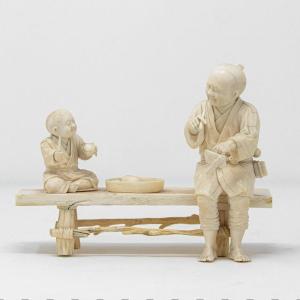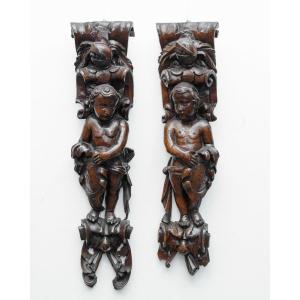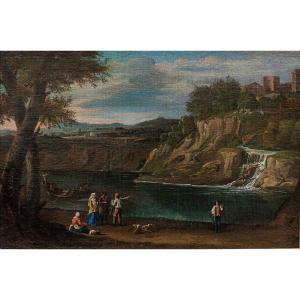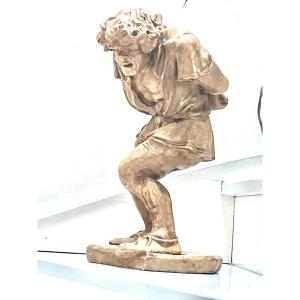Saint Jerome penitent
High relief in carved wood, painted and gilded with the technique "estofado de oro", cm 85 x 54
The estofado de Oro is a particular decorative technique used mainly for the realization of sacred images on polychrome wood. The technique involves several steps and proves to be particularly laborious: first, the carved surface is covered with a layer of gold leaf on which a layer of orange-red clay is applied. The gold leaf is then covered with colour: the colours applied were varied and designed to make the contrast with gold chromatically effective: among the most commonly used colours were green, blue, red, black and white. Finally, the color was exported by scratching with a special tool called dandelion to free the parts where it was intended to reaffiorate gold. The whole thing took on a bright and roaring color, particularly scenic and impressive. This particular and unusual technique, which has its origins in the gothic art, was widely used in the Spanish baroque art and from Spain it was exported to the American colonial art and Sardinia - especially in the province of Medio Campidano - and Sicily. Among the most famous works in which the technique of the estofado de oro is implemented there is the magnificent altarpiece of the high altar of the Cathedral of Toledo.
It is precisely with the fascinating technique of the estofado de oro that this beautiful wooden relief turns out to be decorated. The sculptor who is responsible for its execution depicts Saint Jerome as a hermit with all his canonical iconographic attributes, the cardinal hat and the lion, to whom, according to a popular story, the saint has extracted a thorn from his foot. Gerolamo, dressed only in a miserable animal skin is represented here in his phase of hermit, penitent and in prayer.












































 Le Magazine de PROANTIC
Le Magazine de PROANTIC TRÉSORS Magazine
TRÉSORS Magazine Rivista Artiquariato
Rivista Artiquariato